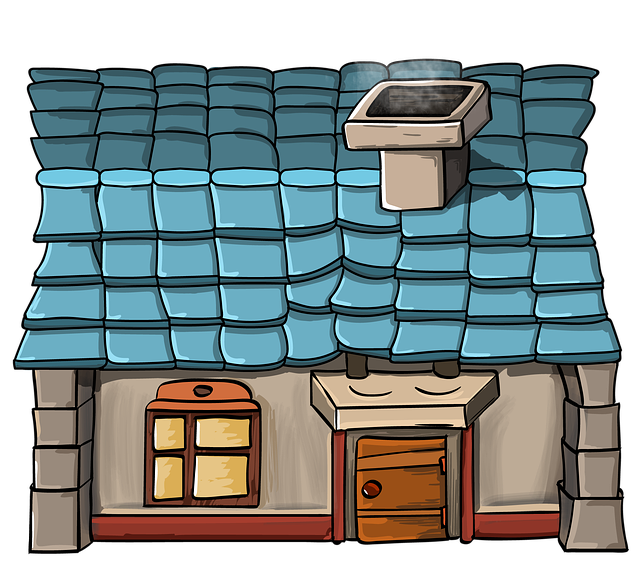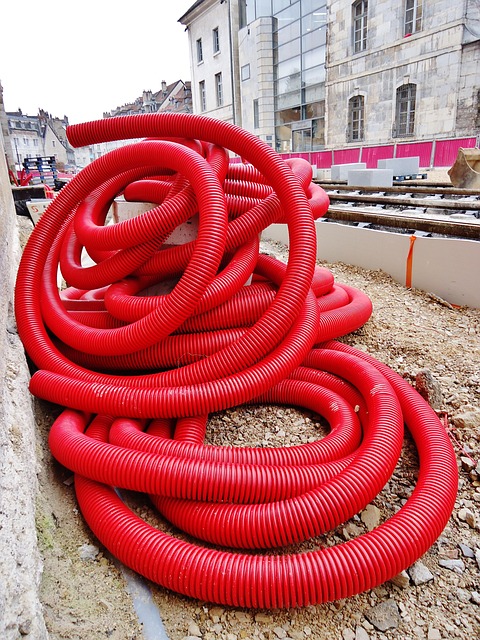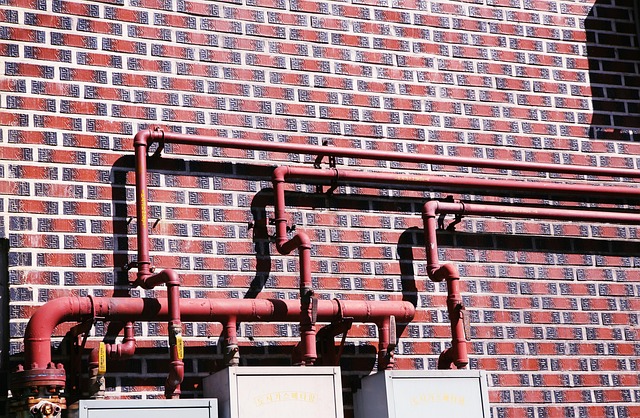To prevent frozen pipes, maintain indoor temperatures above 70°F (21°C), insulate pipes with foam or fiber glass, and use heat tape or lamps in exposed areas. Act proactively during cold weather forecasts and turn off the main water supply valve if freezing occurs. For immediate thawing, use gentle heat sources like heating pads or hair dryers, and slowly melt ice with warm (not boiling) water. Keep heat running during cold spells and open cabinet doors to circulate warm air around plumbing.
Understanding when and how pipes freeze is crucial for homeowners. In cold climates, temperatures as high as 32°F (0°C) can cause water lines to freeze. This guide explores effective strategies to prevent frozen pipes, ensuring your home’s plumbing system remains intact during winter. From insulation and heat tape to regular maintenance checks, learn how to safeguard against costly damage caused by frozen pipes. Discover the steps to take when pipes do freeze and keep your home warm and safe all season long.
- Understanding Pipe Freezing Temperatures
- Strategies to Prevent Frozen Pipes
- What to Do When Pipes Freeze
Understanding Pipe Freezing Temperatures

Understanding Pipe Freezing Temperatures
The temperature at which pipes freeze varies depending on several factors, including the type of pipe, insulation, and external conditions. Generally, most water pipes in residential settings will start to freeze around 32°F (0°C). This is the point where the water within the pipes cools down and transitions from a liquid state to a solid state, forming ice. It’s important to note that even temperatures slightly above freezing can cause pipes to become vulnerable if certain conditions are met, such as prolonged exposure or sudden temperature drops.
To prevent frozen pipes, homeowners should take proactive measures. Insulating pipes in areas prone to cold temperatures is an effective step. Additionally, maintaining adequate heat in homes during winter months ensures pipes remain at a constant, above-freezing temperature. Regularly checking for any signs of leaks and fixing them promptly can also help, as leaks can cause rapid cooling of water within the pipes, increasing the risk of freezing.
Strategies to Prevent Frozen Pipes

To prevent frozen pipes, start by ensuring your home is adequately heated during cold weather. Maintain a consistent indoor temperature above 70°F (21°C) to keep water within its liquid state throughout your plumbing system. Consider using heat tape or thermostatically controlled heat lamps on exposed pipes in areas prone to freezing, such as outdoor spigots and water heaters located in uninsulated spaces.
Additionally, insulate pipes that are subject to temperature fluctuations. Wrapping pipes with insulation material like foam or fiber glass helps maintain a consistent temperature, preventing water from freezing inside them. Make sure these insulated pipes are secured properly and sealed to prevent damage from extreme cold. Keep an eye on weather forecasts and take proactive measures when temperatures are expected to drop below freezing.
What to Do When Pipes Freeze

When pipes freeze, it’s crucial to act quickly to prevent damage and discomfort. If you notice signs of freezing, such as water slowing or stopping flow completely, take immediate action. Start by turning off the main water supply valve to your home. This will stop any remaining water from flowing through frozen pipes, potentially causing more harm.
Next, attempt to thaw the frozen pipes using heat sources like a heating pad, hair dryer, or hot water bottle. Apply these gently along the pipe’s length, being careful not to apply direct, intense heat which could cause damage or even burst the pipe. If the pipes are accessible and heavily iced over, consider gradually warming them by placing containers of warm (not boiling) water near the pipes, allowing the heat from the water to slowly melt the ice. Remember, prevention is key, so implement strategies like insulating pipes in vulnerable areas, keeping heat running during cold spells, and opening cabinet doors to let warm air circulate around plumbing.
In conclusion, understanding the temperatures at which pipes freeze and implementing effective prevention strategies is key to avoiding costly and disruptive frozen pipe incidents. By keeping your home’s water lines well-insulated, maintaining proper heating, and using smart shut-off valves, you can significantly reduce the risk of pipe freezing. Should a freeze occur, knowing how to respond swiftly and safely will help mitigate damage and restore comfort to your living space. Remember, proactive measures are the best defense against frozen pipes, making it essential for every homeowner to familiarize themselves with How to Prevent Frozen Pipes.
